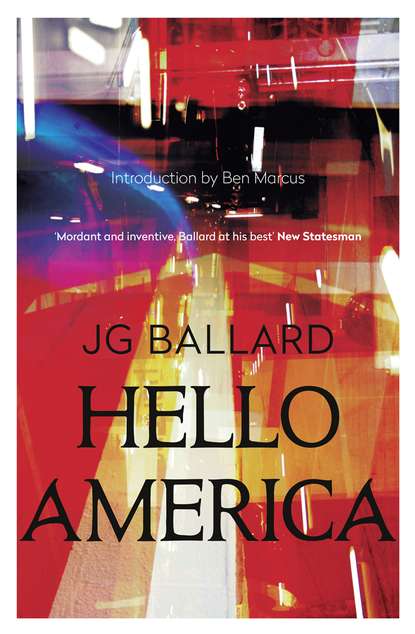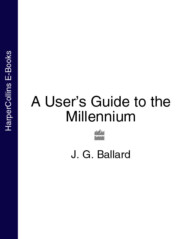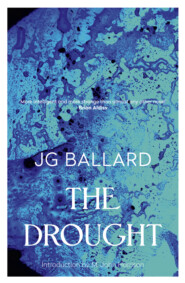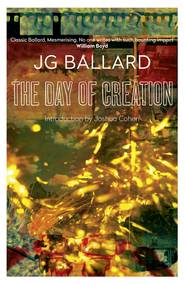По всем вопросам обращайтесь на: info@litportal.ru
(©) 2003-2024.
✖
Hello America
Автор
Год написания книги
2018
Настройки чтения
Размер шрифта
Высота строк
Поля
Every industrial nation in the world had now introduced strict fuel rationing, and government action at the highest levels was concentrated on the task of finding new energy sources. A dozen UN agencies initiated crash programmes to develop feasible systems of wave-generated power, plans were drawn up for tidal dams, windmills and solar generators of every conceivable kind. A belated attempt was made to revive the nuclear power industry, whose growth the anti-nuclear lobbies of a dozen countries had effectively suppressed in the 1980s.
However, these alternative energy sources could only meet a tenth of the needs of the United States, Japan and Europe. The price of gasoline at the American filling station had already climbed from 75c a gallon in 1978 to $5 in 1985, and to $25 in 1990. After the introduction of rationing in 1993, the price of bootleg gasoline on the black market rose to $100 a gallon on the Atlantic coast of the United States, and to over $250 in California.
The end came quickly. In 1999 General Motors declared itself bankrupt and went into liquidation. A few months later it was followed by Ford, Chrysler, Exxon, Mobil and Texaco. For the first time in over a hundred years no motorcars were manufactured in the United States. In his Millennial Address to Congress in the year 2000, President Brown recited a poignant Zen tantra and then made the momentous announcement that henceforth the operation of private gasoline-driven vehicles would be illegal. Despite this emergency decree, there was a widespread sense that once again the government of the United States had been overtaken by events. Traffic had long ceased to flow along the great turnpikes and interstate highways of America. Waist-high weeds flourished in the cracked concrete of the California freeways, millions of abandoned cars rusted on flattened tyres in the garages and parking lots of the nation.
No one, however, could have anticipated the rapid collapse of this once powerful industrial nation. The shortage of gasoline had prepared the American public for the rationingof electric power that soon followed. People everywhere tolerated the frequent blackouts, the sudden dimming of their television screens, the failures of water supplies and food deliveries to their neighbourhoods, the long walks and cycle rides to school, office and supermarket.
But as the traffic drew finally to a halt in the first months of the year 2000, as the silent streets were disturbed only by a few municipal buses and armour-plated vehicles carrying emergency supplies, the whole nation seemed to lose its vitality, its belief in itself and its future. The sight of millions of abandoned vehicles seemed a last judgment on the failure of a people’s will.
Over the next ten years, life in the United States began to run down, with endless blackouts and rationing, electricity limited to an hour a day. Everywhere industries failed, production lines slowed to a halt. Cities emptied as people drifted back to the small towns, to the safety of rural communities far away from the violence and looting of the dying metropolis.
However, with almost no sources of energy available, existence soon became untenable except at a primitive agricultural level. The freezing winters and airless summers of the American Midwest sapped the confidence of the struggling farm communities, their subsistence cropping already overburdened by refugees from the cities.
Already the first Americans had reluctantly packed their bags and set sail across the Atlantic for Europe. Here, conservationist and socialist regimes with long experience of strong centralised government were able to maintain a low-level industrial life. The light bulbs might shine dimly, but at least there was work in the small farm cooperatives and state-run coal mines, in the nationalised engineering factories and food-processing plants, and above all in the vast bureaucracies that stretched around half the globe from Portugal to Korea.
The pace of migration continued, as more and more areas of the United States were abandoned. A huge fleet of ships berthed in the harbours of New York, Boston and Baltimore, San Diego and San Francisco. Over the next twenty years virtually the entire population of the United States migrated back to its original ethnic departure points in Europe and Africa, Asia and South America, a vast reverse migration duplicating the original westward passage two hundred years earlier. White Americans emigrated back to Italy and Germany, eastern Europe, Britain and Ireland, black Americans to Africa and the West Indies, Chicanos waded south across the Rio Grande.
By the year 2030 the American continent had been totally abandoned, its once teeming cities empty and silent. With the agreement of its European partners, the President, Supreme Court and Congress set up a US Government-in-Exile in West Berlin, but its role was inevitably ceremonial rather than real. After President Brown’s retreat to a Zen monastery in Japan the office of the Presidency was declared to be in abeyance, Congress dissolved itself and all future elections to federal office were postponed indefinitely. The government and nation of the United States ceased to exist.
In the years that followed, widespread measures of climatic control were carried out by the world government to feed the increased populations of Europe and Asia. These impressive feats of geo-engineering steadily transformed the landscape of the American continent. Chief among them was the damming of the shallow waters of the Bering Straits between Siberia and Alaska. By pumping the cold Arctic water south into the Pacific, so that warmer Atlantic currents would flow into the Arctic Circle through the Greenland Gap, the entire climates of northern Europe and Siberia were revitalised. For the first time, winter temperatures rose above freezing-point, permafrost melted, and millions of acres of wilderness were reclaimed for agriculture and coal-mining, summer wheat-crops were harvested well within the Arctic Circle.
Unfortunately, the consequences for the United States were calamitous. The northward flow of hot equatorial Atlantic water drawn up into the Greenland Gap soon transformed the climate of the eastern seaboard. As the last emigrants struggled aboard the converted troopships in Boston and New York harbours, a blistering heat lay over the parched coastline, dust-clouds hung above the abandoned cities. As they looked back over the stern-rails of the convoy ships bound for Europe, the departing Americans could already see the desert moving in to take over their towns and suburbs.
Meanwhile, the Pacific coast of the American continent was ravaged by an equally extreme climatic change. The cold Arctic waters pumped southwards over the Bering Dam cut through the warm Pacific deeps like a series of icy guillotines. By the middle of the twenty-first century Japan had become a frozen wilderness, an archipelago of glaciers that turned the once fertile hillsides into terraced ice-rinks. Hundreds of cubic miles of cold water plunged south to the Equator, turning the sunny atolls and lagoons of the Marshall Islands into the freezing fishing grounds of a few hardy whale-hunters living in igloos and snow-capped cabins.
Displaced by this frozen tide, the Equatorial waters were driven towards the American coast. A hot Polynesian Current replaced the cold Humboldt and struck the beaches of California from the south. The warm, moisture-laden air blowing over the coastal mountains produced torrential rainstorms and flash-floods. The departing Americans from the sometime sunshine state who set off across the Pacific to Australia and New Zealand looked back to see the harbours of Long Beach and San Diego shrouded by immense thunderstorms that struck inland as far as the Rockies. The last reports from Las Vegas described the abandoned gambling capital sitting half-submerged in a lake of rain-lashed water, its wheels stilled, the dying lights of its hotels reflected in the meadows of the drowned desert, a violent mirror reflecting all the failure and humiliation of America.
8 Thirstland (#ulink_ba0493d7-82c6-5c45-9e91-c96d7cdd921d)
Ten days after the arrival of the Apollo in New York harbour, a small expedition set off on horseback down the eastern desert coast of the United States. Led by Captain Steiner, it crossed the sand-filled Hudson River and moved out along the wide and empty deck of what had once been the New Jersey Turnpike.
For Wayne, sitting up on the supply wagon, the reins of the mule team gripped firmly in his hands, these first miles immediately brought back all the excitement he had felt when the Apollo sailed into New York harbour. Shielding his eyes from the glaring sand on either side of the Turnpike, he expertly cracked the mules’ dusty rumps as they lagged behind the leisurely hooves of Orlowski’s sturdy pinto. The distant skyscrapers of Manhattan and the office blocks of Newark and Jersey City were at last falling behind them, and after the confused days in New York they were now entering the Great American Desert.
Although they had come across no trace of the previous Fleming expedition, Wayne felt a surge of confidence, the certainty that they would find the El Dorado he had dreamed of for so long – not the literal golden city sought by McNair, but that vision of the United States enshrined in the pages of Time and Look, and which still existed somewhere. Wayne listened to the rubber tyres of the supply wagon cut through the soft sand. Movement was what America was about, expressed all its energy, its belief in itself. He looked out over the thirstlands of New Jersey, certain that he could master and tame this wilderness, in some way make it bloom again.
Almost three hundred yards away now, Steiner rode his black mare at the head of the expedition, his dark figure shimmering in the haze that rose from the metalled road. At times the Captain would seem to disappear, leaving a leaky question mark on the quivering air, as if he were slipping away into a parallel continuum. Behind him came the baggage train of twenty horses, loaded with supplies, camping equipment and the scientific instruments – half the laboratory from the Apollo packed into dozens of saddlebags.
‘Orlowski, can you call Steiner back? He’s leading his own separate expedition again…’ Dr Ricci had dismounted, and was setting up the seismographic tripods and radiation counters, ready to carry out the latest in the series of five-mile measurements. Anne Summers, meanwhile, was unstrapping the radio receiver tuned to the transmitter of a gamma-ray detector mounted on the roof of the Pan Am Building in Manhattan. On the last day Wayne and a young sailor had made the heroic climb up the endless stairways to the helicopter pad, where they had set up the machine, recompensed by a breath-taking view of the American desert stretching to the Appalachians.
As usual, Ricci seemed tired and fractious, slapping the dust from his elegant leather jacket – clearly the American wilderness was not glamorous enough for him. However Anne Summers, Wayne was glad to note, looked trim and self-possessed, and worked the radio in a business-like way. Three days after their arrival in New York she had suddenly pulled the pin from the bun behind her neck, and there had emerged, like a flare of light from a grenade, the long blonde hair that now shielded her from the sun. Already, in Wayne’s eyes, this white mane made her resemble some beautiful nomadic widow, endlessly crossing the desert in search of a young husband.
The baggage horses plodded along, heads down in the heat, nervous of the cactus-dotted terrain to the east of the Turnpike. As Wayne had discovered, the animals needed to be watched all the time, and the expedition was undermanned. Orlowski had assigned two reluctant seamen to join the party, but within an hour of leaving New York they had defected, slipping away among the cars and trucks that littered the wadi of the Hudson. Naturally they preferred to stay behind in Manhattan with the rest of the Apollo’s crew, repairing the ship by day and carousing in the empty bars by night, looting the abandoned apartments for the treasure of exotic clothes and record players that would make each of them a millionaire when he went home.
Wayne had fully expected to be left behind with the ship, especially after Steiner’s surprise insistence on joining the expedition and leaving his command in the hands of McNair. But after the defection of the sailors a bad-tempered Ricci had galloped back to collect Wayne, and he found himself in charge of the supply wagon. Fortunately, the mules responded to Wayne, though as he snapped at their ambling flanks with the dusty reins he wondered how to keep up with the rest of the party. The surface of the six-lane highway was littered with the husks of rotting suitcases and jerricans. At least, they were moving south along a relatively empty road. The north-bound lanes, towards New York and the Jersey harbour, were lined with the rusting hulks of cars and buses, bizarre charcoal-burning vehicles with gas cylinders on their roofs, left behind here when they ran out of fuel and their passengers stepped down to walk the last miles to the evacuation points.
Reassuring himself, Wayne listened to the splash and murmur in the metal tanks behind him. No one was going to leave him here, he realised, they were all dependent on the supply wagon, both for the thousand gallons of fresh water in the steel casks, and for the distillation apparatus that would supplement their rations from any damp salt pans or freshwater springs they might come across. In an emergency they could always head for the sea, fuel the still with driftwood and dried kelp and sit it out on the beach until the Apollo arrived. All the same, they needed Wayne. If he chose to steer the supply wagon behind one of these derelict buses, they would certainly be in something of a spot.
‘Professor Summers! Would you join me? Dr Ricci!’
Wayne sat up with a guilty frown. Had Steiner read his thoughts? The Captain had stopped in the shade of a route indicator that overtopped even the giant cactus beside it. He was calling to the two scientists as they finished packing their equipment and remounted. Steiner still wore his mariner’s cap, but under the narrow peak his face already had the expressionless yet wary look of the solitary sheriff or gunfighter. But Wyatt Earp, Wayne thought idiotically, had never worn sunglasses…
‘Come on, Wayne. Don’t play at being left behind. Orlowski!’
‘Captain, I’m not your galley slave.’ Perspiring, Orlowski dug his heels into the pinto and cantered the last few yards. With his short legs and plump chest, sweating freely in his grey Brooks Brothers lounge suit, Orlowski had already cast himself as Sancho Panza to Steiner’s Quixote.
‘“Trenton…Wilmington…Atlantic City…“‘ Orlowski peered up at the route indicator, wiping his face with a silk handkerchief, one of several dozen he had calmly removed from a store on Fifth Avenue. ‘What a help these signs would have been to the founding fathers, they might have taken a sharp U-turn…May I remind you, Captain, that I am in charge of this expedition—you are here to assist in navigation.’
‘And supervise the horses,’ Ricci added, fidgeting in his saddle. ‘This beast you picked for me, Steiner, is already lame.’
Steiner circled him on his strong black mare, nodding thoughtfully at the physicist. ‘I’d rather guess it’s your backside that’s lame, Doctor. Could I suggest that you ride side-saddle?’
Вы ознакомились с фрагментом книги.
Приобретайте полный текст книги у нашего партнера:
Приобретайте полный текст книги у нашего партнера:










